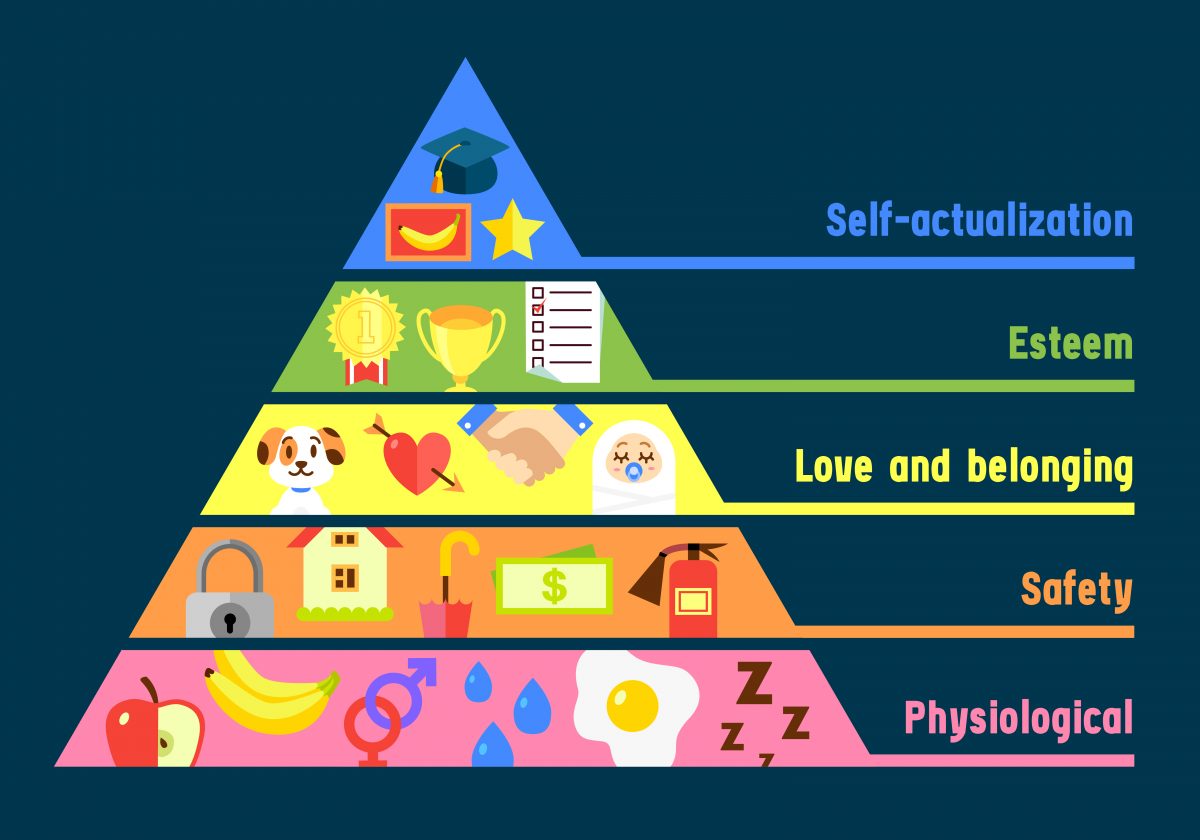Great content marketing gives audiences what they need. The information conveyed is useful. It serves a purpose. That’s the big picture but how can marketers fine-tune their efforts to ensure their content consistently hits the mark?
Step up Abraham Harold Maslow. This American psychologist pioneered our understanding of what makes people tick. He is best known for the eponymous Maslow’s Hierarchy of Needs.
The hierarchy is normally represented as a pyramid. At the base, and of most importance, are physiological needs. These are the absolute essentials without which we cannot survive: food, water, sleep (and in some versions, sex). Safety needs are next. These cover the things that we don’t need to live but are essential to any ordered society in which we don’t live in constant fear and uncertainty. They include security of body, family, employment and morality.
Love and belonging covers friendship, family and sexual intimacy and form the next tier in the pyramid. Esteem follows and includes aspects of self-esteem, achievement, confidence and respect.
At the peak of the pyramid lies the concept of self-actualization. This is the cherry on the cake and includes those things that make for a fully rounded life: morality, creativity, spontaneity, lack of prejudice, problem solving and acceptance of facts.
Having constructed his pyramid, Maslow argued that it was only when the needs at one level were met that the level above became important. Spontaneity and confidence only become important once security of employment and a sense of social belonging are achieved. One can argue about aspects of Maslow’s hierarchy, but the principle is undoubtedly sound. So how can it help content marketers?
Look through Maslow’s lens
Every piece of content created should meet some sort of need. And every content marketer should have an idea of what need is being met. This is where knowledge of your audience is key.
The development of personas is an effective way to segment the targets of your content marketers and an analysis of these personas’ needs through the lens of Maslow’s hierarchy of needs can be hugely useful.
Are there any areas where particular personas will have needs nearer the bottom of the pyramid? If so, this is where your content marketing should be focused. Remember, those needs at the base are the most important and need to be met before those that lie above can be considered.
Beyond Maslow
Of course there is only so much a marketer can do to address a lack of shelter, family breakdown or too little sexual intimacy. We’re good, but we may not be that good.
We can, however, adopt Maslow’s approach to build bespoke pyramids for each of our audiences or personas. This technique is especially useful for B2B marketers and involves analyzing the various needs of an audience and, crucially, ordering them in importance.
You’ll have to work out where you set the baseline for your range of needs, and whether you include any non-business aspects. Accountants may need to know the latest tax regulations but they also like to be considered well informed on current affairs and probably enjoy a joke. Identifying a need doesn’t mean you have to help meet it, but it will give you a much richer idea of your audience.
These pyramids can be as niche and numerous as needed. Time spent analyzing audience is rarely wasted and is likely to produce original content ideas. Once produced, the pyramids provide a touchstone against which content ideas can be considered. Are your campaigns consistently meeting one specific need at the top of a particular pyramid? If so, are you ignoring a more fundamental requirement nearer the base that your audience needs to address more urgently?
Persona-based pyramids of need are no magic bullet, but they will help you create content that will be valued. And that’s something we all need.
![]()

